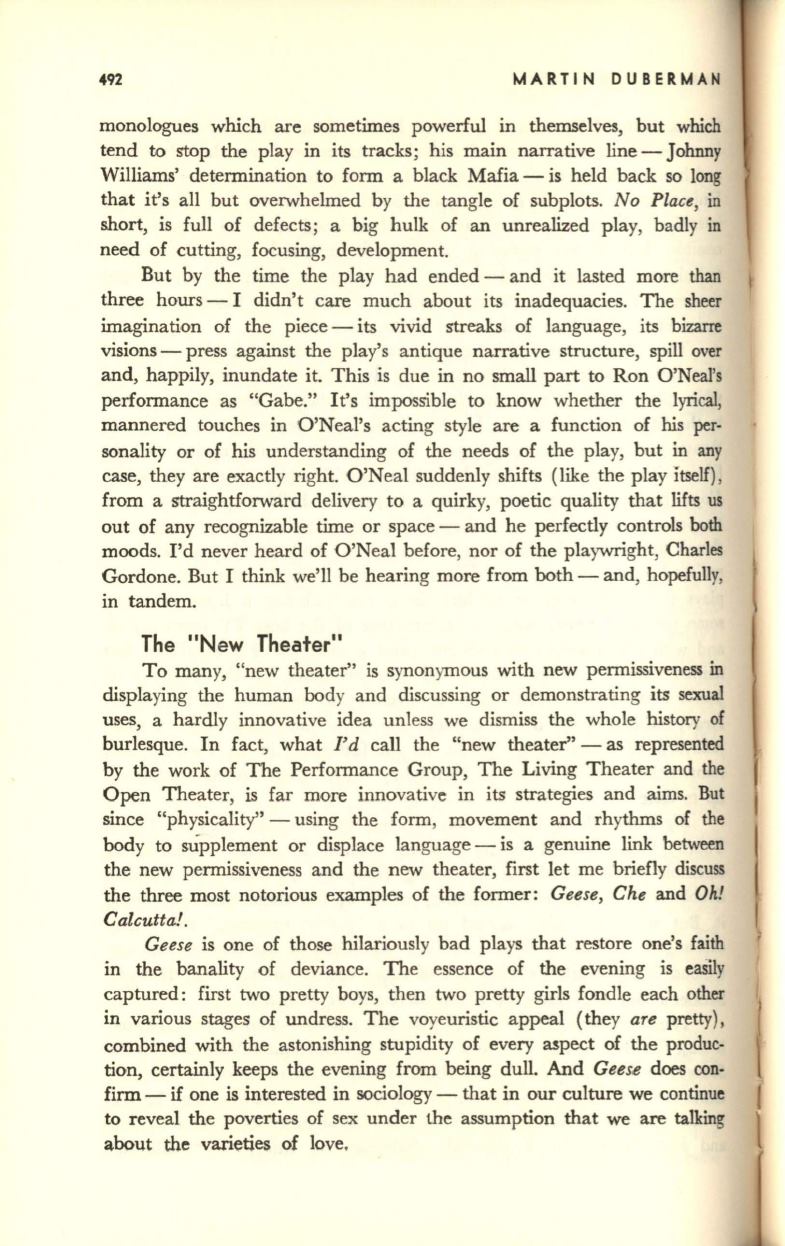
492
MARTIN DUBERMAN
monologues which are sometimes powerful in themselves, but which
tend
to
stop the play in its tracks; his main narrative line- Johnny
Williams' detennination to fonn a black Mafia - is held back so long
that it's all but overwhelmed by the tangle of subplots.
No Place,
in
short, is full of defects; a big hulk of an unrealized play, badly in
need of cutting, focusing, development.
But by the time the play had ended - and it lasted more
than
three hours - I didn't care much about its inadequacies. The sheer
imagination of the piece - its vivid streaks of language, its bizarre
visions - press against the play's antique narrative structure, spill over
and, happily, inundate it. This is due in no small part to Ron O'Neal's
perfonnance as "Gabe." It's impossible to know whether the lyrical,
mannered touches in O'Neal's acting style are a function of his per–
sonality or of his understanding of the needs of the play, but in any
case, they are exactly right. O'Neal suddenly shifts (like the play itself),
from a straightforward delivery to a quirky, poetic quality that lifts us
out of any recognizable time or space - and he perfectly controls both
moods. I'd never heard of O'Neal before, nor of the playwright, Charles
Gordone. But I think we'll be hearing more from both - and, hopefully,
in tandem.
The "New Theater"
To many, "new theater" is synonymous with new pennissiveness
in
displaying the human body and discussing or demonstrating its sexual
uses, a hardly innovative idea unless we dismiss the whole history of
burlesque. In fact, what
I'd
call the "new theater" - as represented
by the work of The Perfonnance Group, The Living Theater and the
Open Theater,
is
far more innovative in its strategies and aims. But
since "physicality" - using the fonn, movement and rhythms of the
body to supplement or displace language - is a genuine link between
the new permissiveness and the new theater, first let me briefly discuss
the three most notorious examples of the fonner:
Geese, Che
and
Oh!
Calcutta!.
Geese
is one of those hilariously bad plays that restore one's faith
in the banality of deviance. The essence of the evening is eaSily
captured: first two pretty boys, then two pretty girls fondle each other
in various stages of undress. The voyeuristic appeal (they
are
pretty),
combined with the astonishing stupidity of every aspect of the produc–
tion, certainly keeps the evening from being dull. And
Geese
does con–
finn -
if
one
is
interested in sociology - that in our culture we continue
to reveal the poverties of sex under the assumption that we are talking
about the varieties of love.


